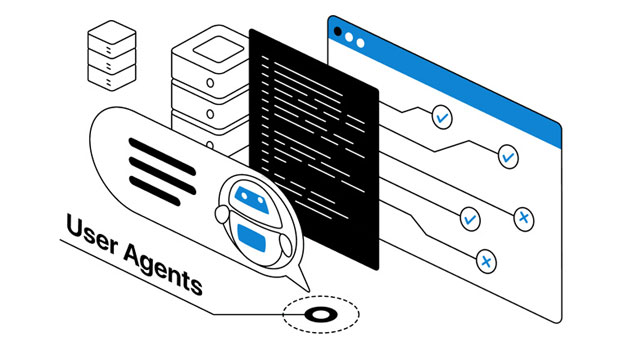What is the difference between Cheap SOCKS5 proxy service and VPN service?
In the digital age, privacy, security, and anonymity online have become top priorities for many users. Two of the most commonly discussed tools to achieve this are socks5 proxies and VPN services. Both provide distinct functionalities, allowing users to mask their real IP addresses and navigate the internet with greater freedom. However, these tools differ in how they operate, their strengths, and their ideal use cases. While SOCKS5 proxies are often cheaper and simpler to set up, VPN services offer a broader range of protections. This article will delve into the key differences between these two, helping users understand which option best suits their needs for online privacy and security. Understanding socks5 proxy ServicesSOCKS5 (Socket Secure) is a protocol that facilitates communication between a client and a server through a proxy server. Unlike HTTP proxies, which only work with web traffic, SOCKS5 can handle all kinds of internet traffic, including email, torrenting, and gaming. SOCKS5 proxies act as intermediaries between the user's device and the websites or services they access, masking the real IP address. One of the main advantages of SOCKS5 is its simplicity. It does not encrypt traffic, which makes it faster than a VPN in most cases. However, because SOCKS5 doesn’t encrypt data, it doesn’t provide the same level of security and privacy that a VPN does. It is primarily used to bypass geo-blocks or masking the user’s location for specific applications like torrenting, streaming, or gaming.Understanding VPN ServicesA VPN (Virtual Private Network) service, on the other hand, creates an encrypted tunnel between a user’s device and the internet. This tunnel protects the user's data from external threats by ensuring all traffic is encrypted before it leaves the device. VPN services provide a high level of security by hiding the user's real IP address and encrypting all internet traffic, making it difficult for third parties such as hackers, ISPs, or government agencies to track online activities.VPNs can be used for a wide variety of purposes, including secure browsing, data protection on public Wi-Fi networks, and bypassing censorship. They are highly recommended for individuals who need robust security and want to ensure their online privacy is maintained.Key Differences in FunctionalityThe most obvious difference between SOCKS5 proxies and VPNs is the level of protection they offer. 1. Encryption: - VPNs provide end-to-end encryption, ensuring that all traffic, including browsing history, passwords, and personal data, is securely transmitted. SOCKS5 proxies, however, do not encrypt traffic, which makes them less secure but also faster for certain tasks. 2. Security: - Since VPNs encrypt all traffic, they offer better protection against cyber threats, hackers, and surveillance. SOCKS5 proxies are only concerned with IP masking, leaving other data unprotected. Therefore, for users who prioritize online security, VPNs are a superior choice.3. Internet Traffic Handling: - VPN services route all internet traffic through their servers, which means all applications on the device benefit from the protection and privacy of the VPN. SOCKS5 proxies, in contrast, are typically configured to work with specific applications, such as browsers or torrenting clients, and only mask the IP address for those applications.4. Speed: - SOCKS5 proxies are generally faster than VPNs because they do not require encryption of traffic. This makes SOCKS5 a good option for users who need to maintain high speeds while performing activities like streaming or gaming, where encryption may be less critical.Use Cases and Ideal ScenariosUnderstanding when to use SOCKS5 proxies versus a VPN depends on your specific needs and goals:1. SOCKS5 Proxy Use Cases: - Bypassing Geo-blocks for Streaming or Torrenting: SOCKS5 is useful when you want to access geo-restricted content on streaming platforms or engage in peer-to-peer (P2P) activities like torrenting. Since it doesn’t encrypt traffic, it allows faster download and upload speeds, which is important for these activities. - Gaming: Some users prefer SOCKS5 proxies for online gaming, as they can reduce latency and speed up connections without the added overhead of encryption. - IP Masking for Specific Applications: If you only need to mask your IP for certain apps like web browsers or torrent clients, SOCKS5 proxies are a simple, cost-effective choice.2. VPN Use Cases: - Online Security and Privacy: If you prioritize safeguarding your data from hackers, ISPs, or government surveillance, a VPN is the best option. It encrypts all of your internet traffic, offering full protection across all online activities. - Secure Browsing on Public Wi-Fi: VPNs are ideal for users accessing public Wi-Fi networks, such as in cafes or airports, where unsecured connections can expose them to risks. - Bypassing Censorship and Geographical Restrictions: Like SOCKS5, VPNs are also effective for bypassing geo-blocks. However, due to their encryption and additional security features, they are more suitable for users in countries with heavy internet censorship.Cost and AffordabilityWhen it comes to cost, SOCKS5 proxies are typically cheaper than VPN services. This price difference arises because SOCKS5 proxies do not offer the same level of security and encryption as VPNs. For users on a tight budget who only need basic IP masking, SOCKS5 proxies may offer a more affordable solution.However, for those who require comprehensive protection and privacy, the slightly higher cost of a VPN is often justified by the added security features and encryption. Additionally, VPN services usually come with more comprehensive support, such as multiple device compatibility and stronger privacy policies.Performance and ReliabilityThe performance of both SOCKS5 proxies and VPNs can vary depending on several factors, such as server location, network congestion, and encryption level.- SOCKS5 proxies: They typically offer better performance for specific tasks like streaming, torrenting, or gaming because they don’t encrypt traffic. However, the lack of encryption also means less protection from surveillance or malicious attacks. - VPNs: While VPNs tend to have a slight impact on speed due to encryption, modern VPN protocols have made great strides in minimizing this effect. Many VPN providers offer high-speed servers, ensuring users don’t experience significant slowdowns.Conclusion: Which Should You Choose? Both SOCKS5 proxies and VPN services have their own strengths and weaknesses, making them suitable for different types of users. - SOCKS5 proxies are best for users looking for a fast, low-cost solution for basic IP masking, particularly for tasks like streaming or torrenting, where encryption is not a priority. - VPN services are ideal for users who prioritize security, privacy, and data protection. They provide comprehensive encryption and are better suited for secure browsing, bypassing censorship, and protecting sensitive information.Ultimately, the decision between a SOCKS5 proxy and a VPN comes down to your specific needs. If security is your main concern, a VPN is the better option. If speed and cost-effectiveness are your top priorities, and you don’t mind sacrificing some security, then a SOCKS5 proxy might be the right choice. Understanding these key differences can help you make an informed decision on the best tool to safeguard your online activities.
2024-12-26

























































